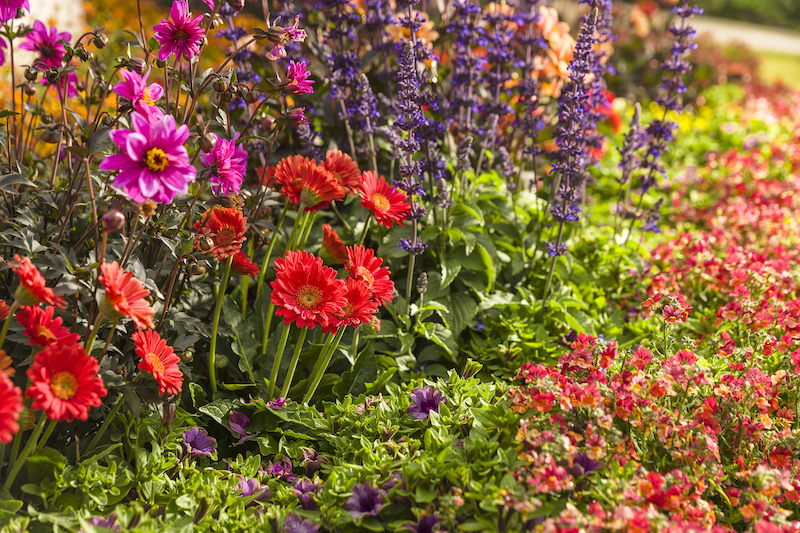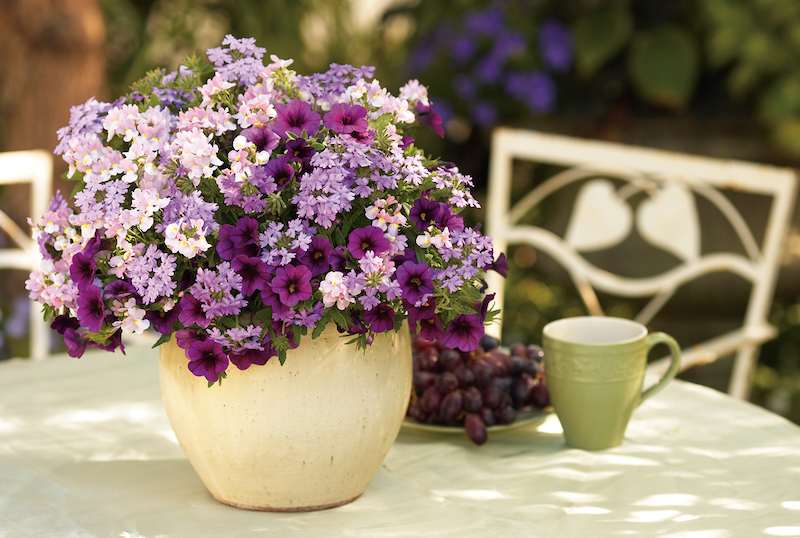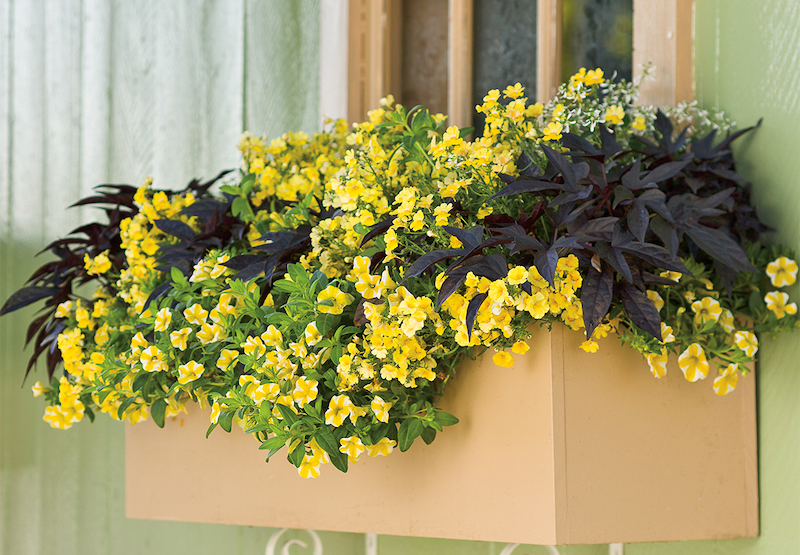Although nemesia is a half-hardy annual native to subtropical regions of South Africa, it is grown as an annual in all of the USDA growing zones in the United States. Its delicate flowers and bright colors make it the perfect element to perk up a tiered planter or hanging basket in the spring or summer. By the time the first frost of fall occurs, it will be ready to die back. The miniature snapdragon-like flowers are good for attracting various beneficial pollinators and do not require regular deadheading during the growing season.
Plant nemesia in a location with part sun to part shade and well-draining but moisture-retentive soil. A light fertilization each month with a diluted liquid seaweed or fish emulsion will keep the plant blooming well with good foliage color.

Shrubs To Plant With Nemesia
Nemesia is a rather small annual that can easily be overwhelmed when grown next to large shrubs and perennials. In a mixed perennial and shrub border, use nemesia to edge the border and give an extra pop of color during the summer months. Plant it near smaller hydrangeas and Japanese maples, which prefer similar growing conditions and won’t overwhelm the space. Well-drained, moisture-retentive soil is the most important element for successfully growing nemesia in the garden. Nemesia grown in beds that stay dry due to large trees and shrubs will require regular supplemental watering, along with annual mulching with organic matter to retain moisture.
Perennials To Plant With Nemesia
Pair nemesia with smaller perennials at the front of a garden bed or in a planter for your deck or patio. African daisies, coneflowers, salvia, perennial verbena, and low-growing, clump-forming ornamental grasses grow well with nemesia. Not only do they thrive in similar conditions as nemesia, but they are also fabulous nectar plants for attracting beneficial pollinators to your garden.
Tuck smaller nemesia plants in empty areas after larger perennials finish blooming for the season. You can plant nemesia around early spring blooming bulbs to help disguise tattered and dying foliage. This tactic is especially useful around daffodils, tulips, and hyacinths, which take a long time to die back fully.
Annuals To Plant With Nemesia
Nemesia is versatile and can grow in either full sun or part shade, making it a great filler in most gardens. Growing nemesia with other annuals as garden bedding plants is perfect for when you haven't quite decided on a long-term planting plan or are renting and do not need a permanent garden design. Use colors of nemesia to highlight the foliage colors of coleus for a bright and eclectic display. Blend softer shades of diascia, calibrachoa, euphorbia, gerbera daisies, and verbena to create a more restful and romantic look for your garden space.
Add a granular extended-release fertilizer to the soil when planting to ensure that all of the plants are properly fed every time they are watered. A formulation specifically for flowering plants is ideal and will have an NPK ratio similar to 1-3-2.

Best Companion Plants For Nemesia in Containers
Nemesia is well suited to container growing due to its long bloom period and shallow root system that does not intrude on other perennials or annuals. The wide range of colors also can be used to create romantic plantings, eclectic bright plantings, or more modern-looking contrasting color schemes. Used nemesia as a filler element in a romantic mix of pink nemesia, deep pink calibrachoa, and a soft purple trailing verbena. Window boxes can be updated by planting a bright calibrachoa and nemesia with a deeply colored sweet potato vine trailing over the edge.

Plants Not To Grow With Nemesia
Shrubs and plants that thrive in xeric conditions are not great companions for nemesia. Yucca, cacti, succulents, and most euphorbias are best used in waterwise landscape plans and will not grow well in soils that retain moisture. Nemesia could be grown as a ground cover near clipped and slow-growing shrubs, but shrubs that are vigorous growers, have a wide fountain shape, or produce copious amounts of sucker growth during the season are bad companions for the much more delicate and dainty nemesia.
Best Plants To Grow With Nemesia
The cheerful and perky flowers of nemesia are irresistible and can be tucked into just about any location or container in the garden. These easy-to-grow plants do not mind if they are in full sun or part shade and only require a well-drained location or container to thrive until the first frost of fall. Combine scarlet red gerbera daisies, sunset-colored single-flower dahlias, blue salvia, and bright orange-colored nemesia for a lovely and energetic combination of colors.
 |
Author Robbin Small - Published 10-09-2023 |
